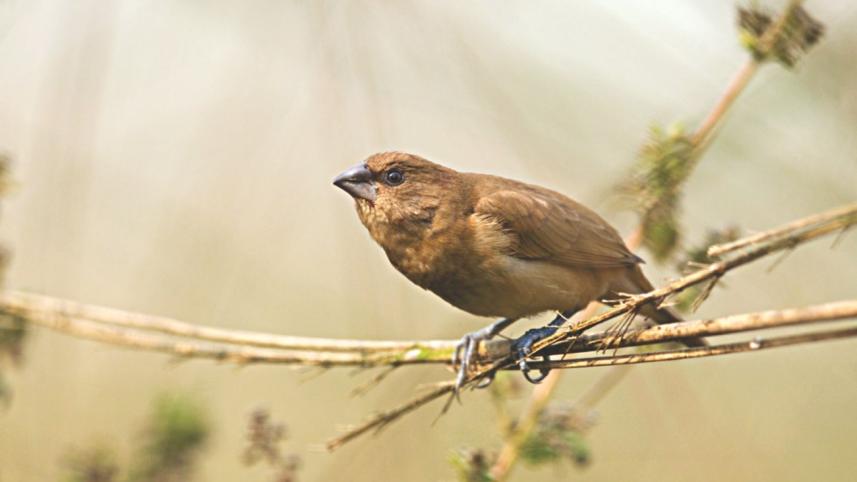Make or Take?

Do you take a photograph or make one? "Taking" does not involve much creative thought but "making" implies a deeper engagement where something is created. Making something usually means an idea is implemented, given shape in reality. Taking is hasty; making requires deliberation.
Most of the photographs we see everyday involve a bit of both. When we photograph friends at a wedding, for example, we often look for the right position, a pleasing arrangement of the subjects, or the right pose. We make the photograph with these choices. But sometimes we click the shutter in a rush – without waiting for the exact moment when everyone is wearing perfect expressions - because we have to move on. That is taking.
It would seem that bird photographs must be taken, not made. Perhaps, but in most cases, I have thought about the lens, the time of day, location, etc before I even find the bird. When photographing it, I try to get the right lighting, a good avian pose and a "clean" image – without clutter from leaves, branches or other obstructions. The more "make" in the photograph, the better it turns out.
Selfies are usually made, sometimes with much thought and skill.
Another word for making a photograph is composing. To compose means to arrange: choose the items that constitute your picture and organise them.
What items constitute the photograph? There is the subject of course, but also the background, the light, the textures and rhythms, colours and, not to be forgotten, the precise instant when the shutter clicks. Although most cameras nowadays work well in a programme mode, to make an extraordinary photograph you need to take control of your camera settings. Thus, for example, by controlling the aperture you decide the depth of field in your photograph, an important element of composition.
So let us cut to the chase. How can you make good photographs?
The first thing is to pay attention to the lighting. For example, in photographs of people, it is important to have even lighting illuminate their faces. Otherwise the picture will not flatter them. When making landscape photographs, cloudy days work best for me because direct sunlight creates harsh contrast.
By the same token, when I am looking for a bird, I try to keep the sun behind me whenever possible, so my subject is illuminated well if and when I find it.
The second thing is to pay attention to the background. That waiter in the background of the wedding photograph, or the jumble of branches behind the bird – they both distract from the subject. Sometimes an uncluttered background is impossible to achieve; in that case, using a wide aperture to create a shallow depth of field helps by blurring the background.
The third thing is to pay attention to the edges of the photograph. Is your photo cutting off someone's foot or hands at an awkward spot? Are someone else's fingers intruding into the frame? These things affect the viewer subliminally and dilute the viewing pleasure.
Finally, it is always good to ask yourself "What do I want to say with this photograph?"
I hope these tips will help you make better photographs. Happy shooting!
www.facebook.com/tangents.ikabir



 For all latest news, follow The Daily Star's Google News channel.
For all latest news, follow The Daily Star's Google News channel.
Comments